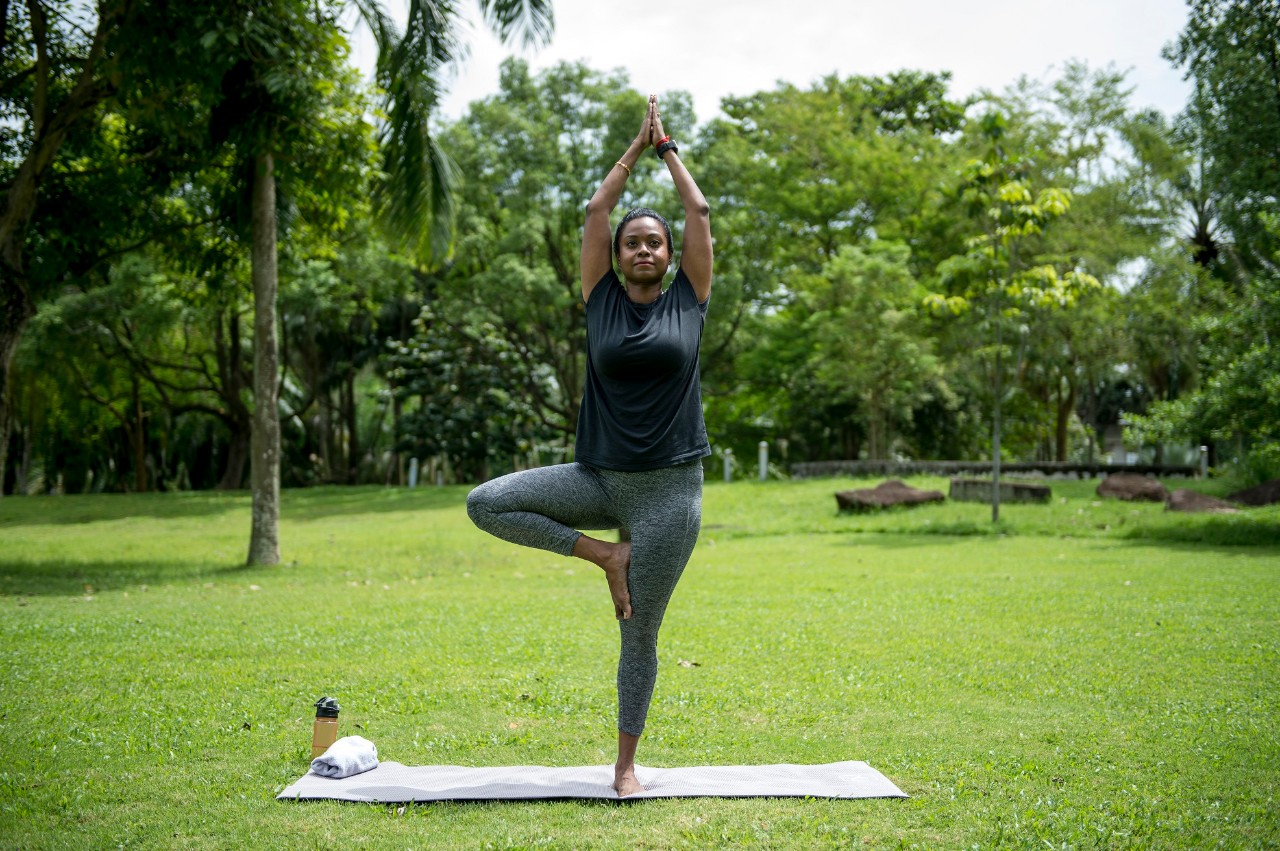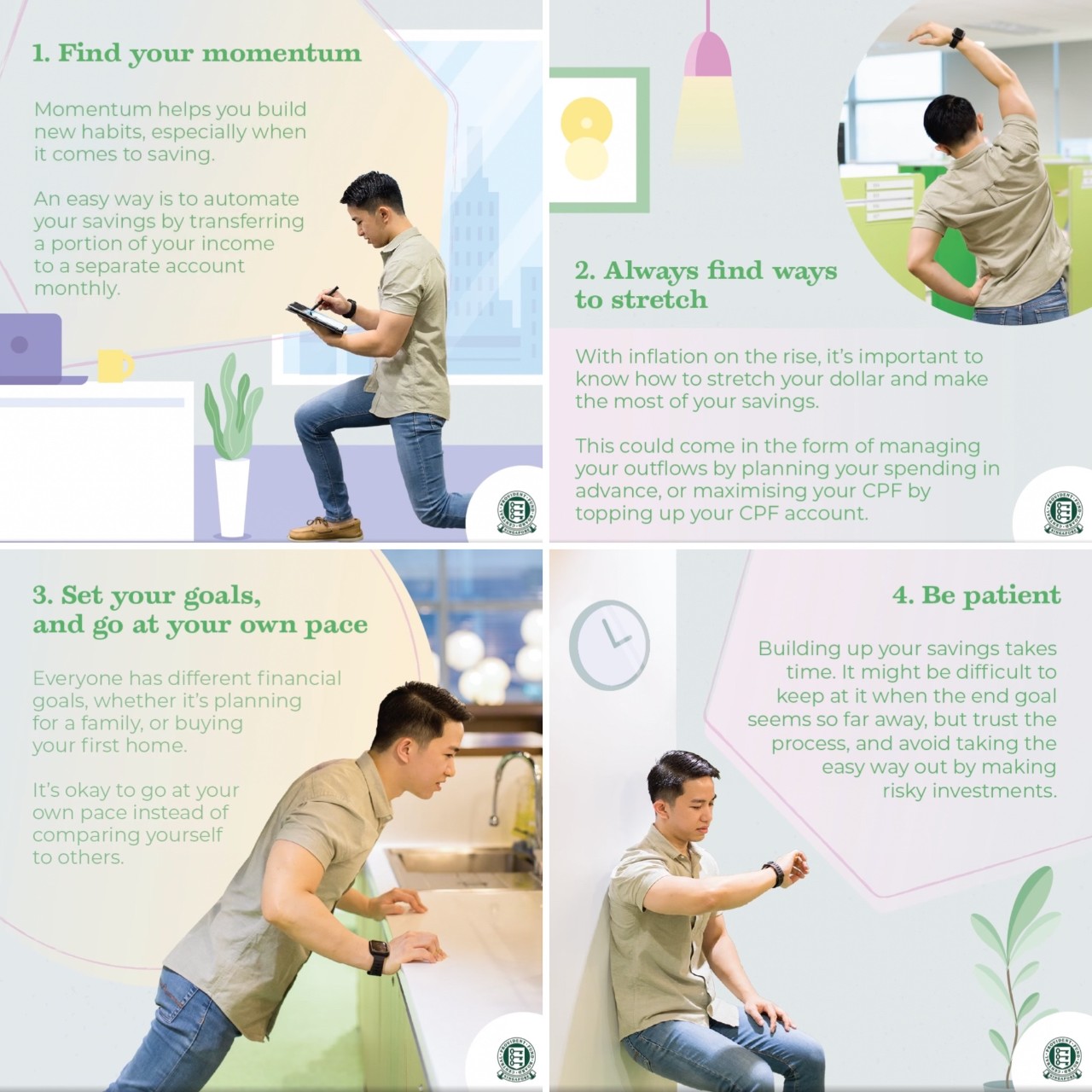10 Oct 2022
SOURCE: CPF Board

Having a good life involves taking care of your well-being, which includes your mental, emotional/social and physical health. In fact, being physically fit and healthy is the foundation for living long and living well.
The benefits of regular exercise far outweigh any potential negatives. They include:
- Managing your weight healthily
- Strengthening your immune system and lowering your risk for more serious illnesses such as cardiovascular diseases or cancer
- Looking and feeling good about yourself
- Reducing stress and improving your mental well-being
Just as you need consistent effort, robust experiences to strengthen your perspectives, and the flexibility to change paths to lead a full life, here are 3 major types of exercise that one can pursue to become and stay healthy:
Aerobic
Aerobic activities condition your heart and lungs and increases the amount of oxygen that is delivered to your cardiovascular system. Exercises such as running or swimming raises your heart rate and maintains it for an extended period of time while increasing your oxygen intake.
Strength
Any physical movements that use your body weight or equipment to build stronger muscles for power or endurance is known as strength training. The goal of all types of strength training such as muscle building, muscle endurance and circuit training is to make you stronger.
Flexibility
Ageing leads to a loss of flexibility in the muscles and tendons. Flexibility is a result of regular physical activity and stretching, which helps to relax muscles. These exercises also improve your posture, agility, and mobility.
However, while we know that physical activity is vital for our well-being, why do we find it hard to work towards optimal physical health? The difficulty does not lie in starting to move, rather it is the commitment to make it a consistent part of your life.
3 common reasons why people don’t start (or stop) exercising:
- A perceived (or real) lack of time
- Fear of injuries
- Boredom/lack of fun
You can overcome this by forming good habits. This can be done as part of activities in your daily life, in various forms and levels of intensity. Are you ready? Let’s get physical!
Level 1: Basic - get started
A perceived (or real) lack of time
Is work getting too crazy? Or is your free time spent taking care of your kids?
It is recommended to have 150 minutes of physical activity every week, but you can start slow/small. Physical activity does not mean you must commit to hour-long gym sessions or long distance runs. Break the 150 minutes into small 10-15 minute workouts across the week. You can start off by incorporating some light physical activities in your everyday lifestyle, ones that can fit in seamlessly in your daily life. Examples include walking to the MRT station or taking the stairs instead of the lift. If you find yourself stuck to a desk way too often, you can also keep moving! Consider standing at regular intervals throughout the day while working or doing light stretches.
The important is thing is to start and have the will to keep it going. It takes 10 minutes to start a routine and 3 months (on average) to form a habit. The actual time-frame might differ for different people, but the point is if you start a regular routine, it will eventually become a habit – a good one.
Fear of injuries
When people get injured from exercise, the likelihood is that they did too much, too soon. To avoid getting hurt, start out at an appropriate exercise level to condition your body. This is not a competition, so progress at your own pace.
Level 2: Intermediate - find your motivation

Once you’ve established a regular routine, take a step towards the next level. At this point, some doubts may surface.
Boredom/lack of fun
Pick activities that you actually enjoy. It is important that you find workouts that fit your interests and lifestyle to help you stay engaged and motivated. If trips to the gym or long runs are not for you, you might want to consider activities such as dancing or doing yoga. If sports are your thing, schedule regular game sessions with your friends.
Find a partner or a group of friends to join you. Having someone to encourage you and share the fun (and pain) will definitely make it more enjoyable. And if your worry is taking time away from your children, find a way to do it together. It can be a daily walk in the park or bike rides around Singapore during the weekends.
If you find yourself getting bored easily, give yourself a myriad of options and switch up your workout often.
Level 3: Advanced
Now that you are exercising more regularly and have a higher level of physical fitness, it’s time to take your workouts up a notch.
For your 150 minutes of physical activity, look to do 30 minutes of moderate to high-intensity exercise five times every week. Any physical activity that results in a much higher heart rate and rapid breathing is considered high-intensity exercise.
This doesn’t mean you need to give up your favourite activities. You can continue to do them, but at a more vigorous pace. This could mean cycling at a faster speed, running uphill instead of brisk walking, a full-court five-a-side basketball game instead of a half-court game.
Increasing the intensity of your exercise can result in higher calorie burn and improved health, and also helps you save time. A high-intensity 30 minute workout can be as beneficial as a lower-intensity 60 minute workout.
However, it is important to incorporate high-intensity activities into your routine cautiously. If you are just starting, aim for short bursts of intense activity followed by recovery periods.
Consider following a 2:1 work to recovery ratio. An example would be to run at a much faster pace for short intervals of 1 minute, followed by brisk walking for 30 seconds. Adjust your pace and intervals based on your level of fitness and goals.
Don’t forget to let your body recover – it will take more time to recover from a high-intensity exercise.
Maintaining good financial health is akin to keeping physically fit and healthy - consistency in cultivating good habits, building a strong and robust financial gameplan, and having the flexibility to find ways to stretch your savings.
“When it comes to being financially fit, slow and steady wins the game.” Much like keeping physically fit, financial fitness also involves careful planning, being persistent, and having patience. Charles Adam Lim, a Senior Customer Service Executive at CPF Board, shares his tips on how you can build up your finances:

Your CPF provides a strong foundation for your future financial goals. From the day you started working, your savings have been growing steadily. Form the good habit of saving for your future – a good start is to make small, regular top-ups to your CPF accounts. This gives more time for your savings to grow further, thanks to the power of compound interest.
If you want to further step up your financial and fitness game, watch CPFB’s #GetFinFitwithMe series, where Chow Jia Hui, Shaun Tupaz, and Junus Eu break down financial tips through a series of workouts.
Check out other articles in our wellness series to stay well and healthy!
Take the Vitamin Cs of ageing healthily
Information in this article is accurate as at the date of publication.


